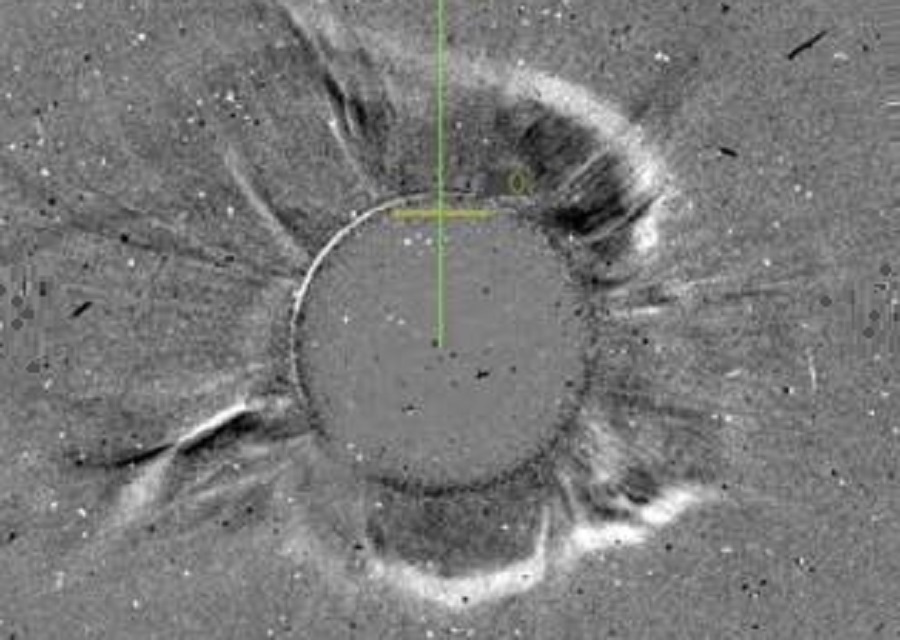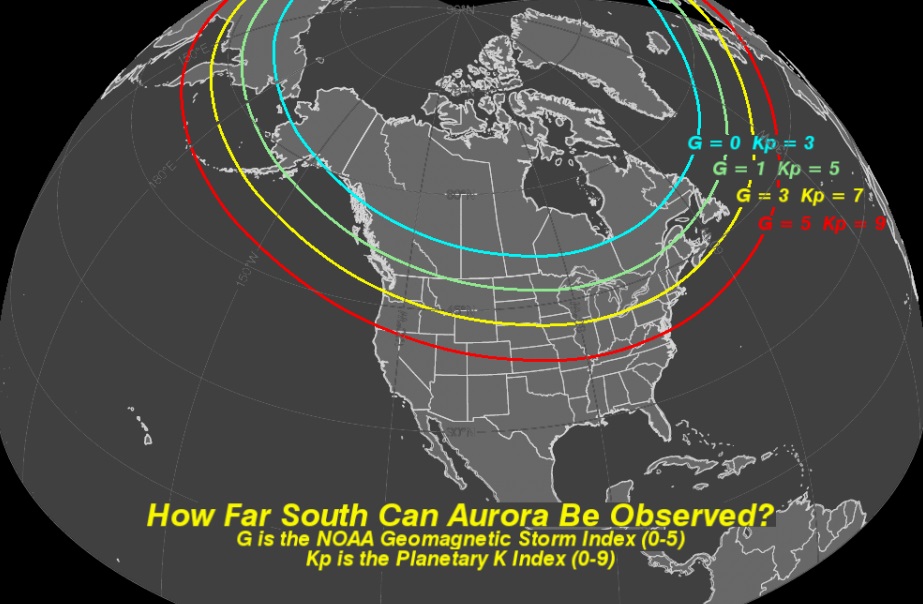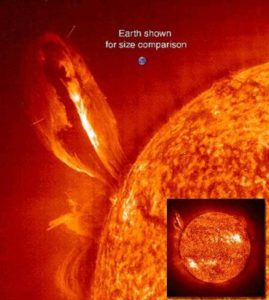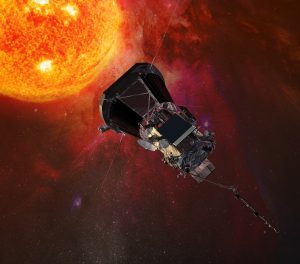
The hyperactive Sun at the heart of our Solar System has been blasting space with frequent space weather in the last few weeks; some of the storms have hit Earth as a geomagnetic storm, a radiation storm, or both. It appears yet another blast is enroute to Earth, prompting forecasters with NOAA’s Space Weather Prediction Center to issue a fresh Geomagnetic Storm Watch for moderate / G2 conditions on April 14; due to expected lingering impacts, they’ve also issued a Geomagnetic Storm Watch for minor / G1 conditions on April 15. Specifically, a C1 flare that erupted from the Sun contained a coronal mass ejection (CME); this CME is expected to impact Earth and trigger the geomagnetic storm.
Geomagnetic storms are rated on a 1-5 scale with 1 being minor and 5 being the most extreme. A severe (4) or extreme (5) storm could be extraordinarily disruptive to life on Earth, knocking out electricity, communications systems, and perhaps permanently disabling most things running on electricity. Scientists will continue to monitor conditions to see if a more severe geomagnetic storm will unfold. Severe storms have impacted Earth before, but in times before the proliferation of electricity, computers, the internet, and satellite communications.

While the impacts of geomagnetic disturbances usually aren’t visible to the eye, they can instigate aurora to appear much further south than usual. While aurora, also known as the Northern Lights, is visible in high latitudes in Alaska and central and northern Canada, this geomagnetic storm could push aurora deep into the United States. The Space Weather Prediction Center says it is possible that aurora can shine as far south as Illinois and Oregon; it is also possible aurora could appear more south than that if the geomagnetic storm was stronger than currently forecast.

While these solar events can help illuminate the sky with stunning aurora, they can also do considerable harm to electronics, electrical grids, and satellite and radio communications.

The 1859 incident, which occurred on September 1-2 in 1859, is also known as the “Carrington Event.” This event unfolded as powerful geomagnetic storm struck Earth during Solar Cycle 10. A CME hit the Earth and induced the largest geomagnetic storm on record. The storm was so intense it created extremely bright, vivid aurora throughout the planet: people in California thought the sun rose early, people in the northeastern U.S. could read a newspaper at night from the aurora’s bright light, and people as far south as Hawaii and south-central Mexico could see the aurora in the sky.
The event severely damaged the limited electrical and communication lines that existed at that time; telegraph systems around the world failed, with some telegraph operators reporting they received electric shocks.
A June 2013 study by Lloyd’s of London and Atmospheric and Environmental Research (AER) in the U.S. showed that if the Carrington event happened in modern times, damages in the U.S. could exceed $2.6 trillion, roughly 15% of the nation’s annual GDP.
The Sun has been exceptionally busy lately, with dozens of significant flares exploding off of the star in recent weeks. Solar flares are giant explosions on the sun that send energy, light and high speed particles into space. These flares are often associated with solar magnetic storms known as coronal mass ejections (CMEs). Flares are ranked on a classification system that divides solar flares according to their strength. The smallest ones are A-class (near background levels), followed by B, C, M and X. Similar to the Richter scale for earthquakes, each letter represents a 10-fold increase in energy output. So an X is ten times an M and 100 times a C. Within each letter class there is a finer scale from 1 to 9. C-class and smaller flares are too weak to noticeably affect Earth. M-class flares can cause brief radio blackouts at the poles and minor radiation storms that might endanger astronauts. According to NASA, although X is the last letter, there are flares more than 10 times the power of an X1, so X-class flares can go higher than 9. NASA says the most powerful flare measured with modern methods was in 2003, during the last solar maximum, and it was so powerful that it overloaded the sensors measuring it. Those sensors cut out at X28.

These space weather storms that originate from the Sun can create radio black-outs and radiation storms on Earth. The radiation blasts associated with solar flares may not only bring harm to astronauts in space, but to airline passengers and crew on Earth. According to NOAA’s Space Weather Prediction Center (SWPC), “An enhancement in the energetic portion of the solar radiation spectrum may indicate increased biological risk to astronauts or passengers and crew in high latitude, high altitude flights.” Beyond impacting humans, the excess radiation could also harm electronics. “Energetic particles may represent an increased risk to all satellite systems susceptible to single event effects. This information should be used in conjunction with the current Solar Radiation Storm conditions when assessing overall impact,” the SWPC said in a previous bulletin.
While typically known for their weather forecasts, the National Oceanic and Atmospheric Administration (NOAA) and its National Weather Service (NWS) is also responsible for “space weather.” While there are private companies and other agencies that monitor and forecast space weather, the official source for alerts and warnings of the space environment is the Space Weather Prediction Center (SWPC). The SWPC is located in Boulder, Colorado and is a service center of the NWS, which is part of NOAA. The Space Weather Prediction Center is also one of nine National Centers for Environmental Prediction (NCEP) as they monitor current space weather activity 24/7, 365 days a year.